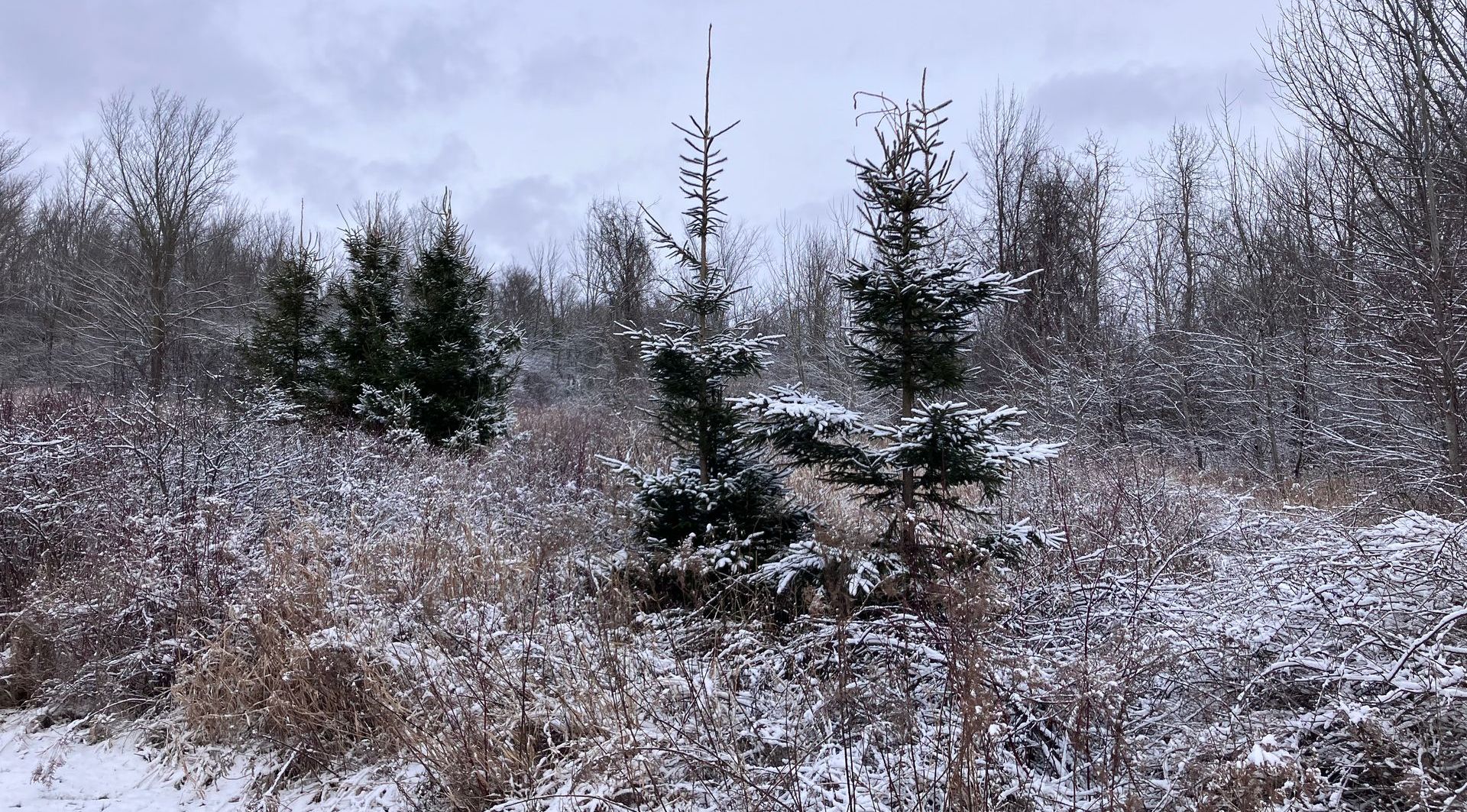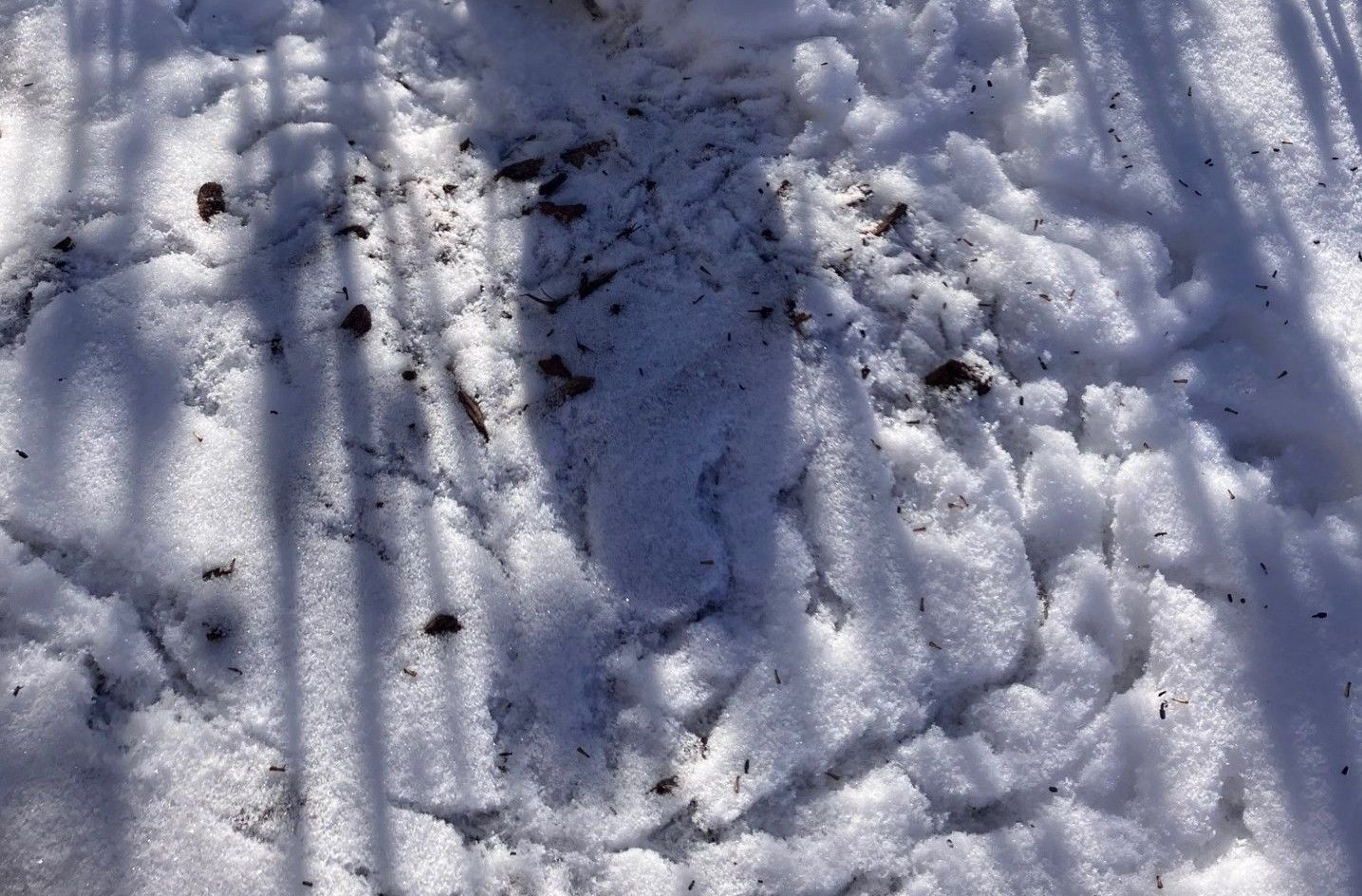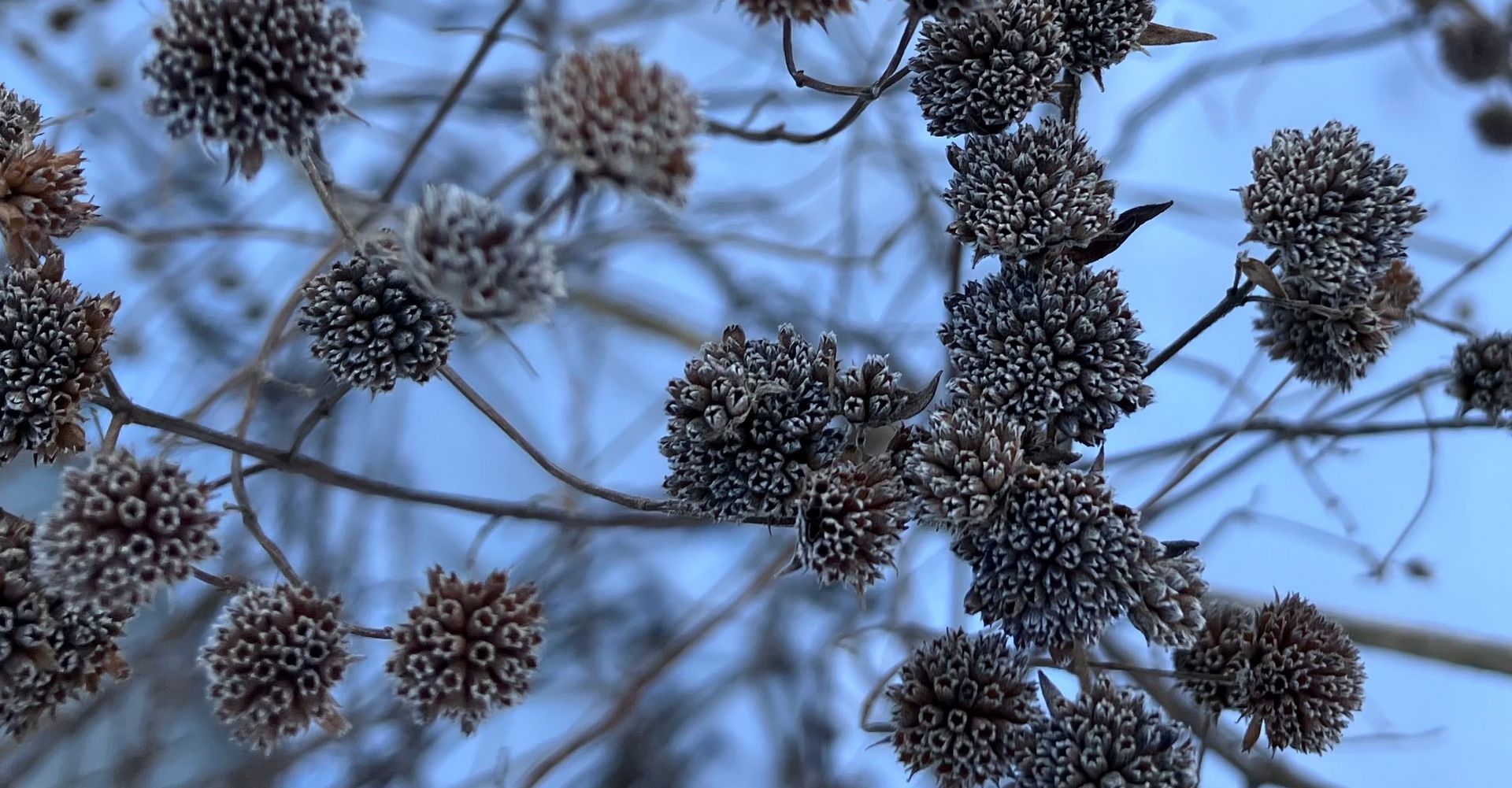Pollinators In The Winter- What Are They Up To?
Pollinators In The Winter- What Are They Up To?

Happy holidays! In Oakville, we’ve had a bit of snow and chilly weather over this season but you may be wondering where our pollinator friends go during the winter. Unlike us, they don’t have fireplaces or warm homes to face the cold and must go to greater lengths to survive the season.
Where do they go?
As you may know, many species of birds and butterflies migrate to warmer climates. The remarkable monarch butterfly will travel over 2000 miles! However, other types of butterflies or moths go through diapause instead, a form of butterfly hibernation in which they enter one of their four life stages (egg, caterpillar, chrysalis, or adult form).
Many native bees lay eggs in underground nests or into protected cavities above ground, these eggs hatch and live as developing pupae or dormant adults, staying warm inside their nesting sites. Whereas, the bumble bee species only protect the new queens- they spend the season in holes of soft wood or dry underground consuming as much nectar as possible to build fat reserves.
Other insects will follow similar habits by spending the season living in soil, vegetation, old leaves, under logs, bark, stones, or tunnel underground, inside plant stems or wood.

When do they come back?
Each pollinator will return at different times of the year ranging from early spring to even late summer. For migrating species, their journey back is long, monarch butterflies take up to two months.
Once it is warm enough, female native bees emerge and come back to their nesting site to lay the next generation of eggs. Similarly in the spring, queen bumble bees will emerge and find new nesting sites to start the next colonies. Upon reemerging, they are hungry and want to quickly find food.
How can we support their transition?
These pollinators are incredibly resilient and have adapted their strategies to survive the harshness of the season. However, it is important we support them by providing pollen and nectar sources vital for their transition and the survival of future generations. This means we want to keep our gardens and yards ‘untidy’ over the winter season. We can rake less and leave more piles of leaves or even sprinkle them on our flowerbeds. This will not only provide shelter for the pollinators but also protect plants from extreme weather. As well, try to avoid trimming/cutting back dead plants or disturbing bare soil. Lastly, we can help create their habitats by providing extra logs, stone, or other homes for them to live in!
Sources:
https://pollinatorpartnership.ca/en/blog/where-do-pollinators-go-in-the-winter
https://wildpollinators-pollinisateurssauvages.ca/2018/03/18/where-do-pollinators-go-in-winter/
https://www.calgary.ca/parks/wildlife/pollinators-winter-care.html
https://www.gardeningknowhow.com/garden-how-to/beneficial/pollinators-in-winter.htm

